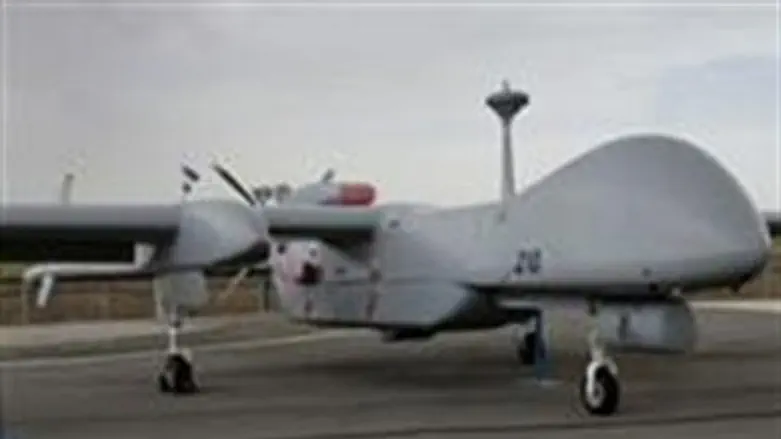
Israel’s military unmanned aerial vehicles (UAVs) may help locate kidnapped soldiers and prevent terrorists from using captives as bargaining chips for the release of convicted terrorists.
Terrorist organizations have always made it their goal to kidnap Israeli soldiers, dead or alive, and the Cabinet’s approval Tuesday night of the release of 1,027 terrorists and prisoners for the return of kidnapped soldier Gilad Shalit shows how far Israel is willing to go to bring soldiers back home. The deal was opposed by three Cabinet ministers who considered it a surrender to terror and a danger to Israel’s security.
Previous deals have resulted in the murder of well over 120 Israelis at the hands of freed terrorists.
The military’s EITAN Unit (Unit for Detecting Missing Soldiers) uses UAVs to watch over enemy territory in order to thwart any kidnapping attempts.
"Our goal is to respond as quickly as possible once a soldier is determined missing, find him and bring him back safely" explained Major “Yoav.” He added, "Locating the soldier right away prevents a personal, national, and international crisis."
Shalit was kidnapped by Gaza terrorists in a deadly raid on an IDF checkpoint five years and was quickly hidden in a secret location, barring any reasonable chance of freeing him alive.
Common kidnapping scenarios include kidnapping by terrorists, casualties in the battlefield, pilots that eject from a plane and hikers lost in the desert.
A new course was recently designed to teach Air Force UAV operators to cooperate with EITAN. The course teaches how to locate fresh burial sites and missing persons using UAVs.
"Our goal is to use existing technology in the best way possible, to trace and locate missing persons", explained Maj. Yoav, a commander in the unit. "EITAN's task is clear: to provide geographic coordinates of the missing person's exact location, dead or alive. At the very least, we should be able to narrow the search territory. We achieve this objective by analyzing the terrain, talking to soldiers, and more. The UAV enables us to explore enemy territory and reach previously inaccessible places."
"We are the eyes of EITAN", says Maj. Meir, a UAV commander. "To search for a missing person in enemy's territory is like searching for a needle in a hay-stack. The search area must be narrowed down as much as possible."
"During the Second Lebanon War Yoav and I were called in to search for the body of a commando soldier," said Chen, a UAV operator. "It was a difficult task, and we were exhausted following a week of hard work. After we found him, I hurried home to catch a few hours of sleep before going back the next morning.
“Only when I returned, I burst into tears. I didn't feel anything specific but I realized that things built up inside of me. Only then I realized the level of detachment I had to employ that day."